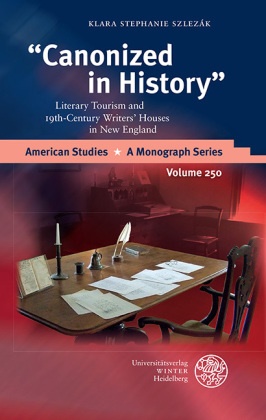Description
Détails du produit
| Auteurs | Klara St. Szlezák, Klara Stephanie Szlezák |
| Edition | Universitätsverlag Winter |
| Langues | Anglais |
| Format d'édition | Livre Relié |
| Sortie | 01.01.2016 |
| EAN | 9783825363475 |
| ISBN | 978-3-8253-6347-5 |
| Pages | 346 |
| Dimensions | 135 mm x 210 mm x 26 mm |
| Poids | 518 g |
| Illustrations | 56 farbige Abbildungen |
| Thèmes |
American Studies / A Monograph Series American Studies American Studies - A Monograph Series American Studies |
| Catégories |
Sciences humaines, art, musique
> Linguistique et littérature
> Linguistique et littérature anglaises
Amerikanische Literatur, Populäre Kultur, Dickinson, Emily, Melville, Herman, Neuengland, Vereinigte Staaten von Amerika, USA, Gedenkstätten, Nationalliteratur, Regionalliteratur, Kollektives Gedächtnis, Musealisierung, Longfellow, Henry Wadsworth, Literaturtourismus, American Renaissance, Schriftstellerhäuser |
Commentaires des clients
Aucune analyse n'a été rédigée sur cet article pour le moment. Sois le premier à donner ton avis et aide les autres utilisateurs à prendre leur décision d'achat.
Écris un commentaire
Super ou nul ? Donne ton propre avis.

